Pros
- Campaign stories are decent enough
- High replay value thanks to various distinguished factions with their own unique technologies, skills, and units
- Graphics are colorful and interesting
- Hero customization with different mounts and equipment is fun
- Battles are fun if you like to micromanage all aspects
Cons
- While battles are interesting, I found myself constantly automating them even when the army values were close
- City-building feels lacking somehow since there are no limits in terms of number of buildings allowed per city
- No downside to spamming cities for benefits except that you have to manage them
- No automated exploration
I thoroughly enjoyed Age of Wonders Planetfall. I had high expectations for this game, and it met and exceeded those expectations.
For reference, I’ve played Sid Meier’s Alpha Centauri and believe that it’s one of the better, if not the best, examples of a 4X game of its type. I’ve also played Pandora First Contact and Endless Legend, more recent analogues.
Gameplay
Triumph Studios has done a great job with the pacing of the game. Many 4X games tend to have a great start and then slow down. For some games, the mid-to-late game can be an endless procession of End Turns until you win (or lose).
The story and availability of quests make the campaign more interesting, and you learn more of the lore as you progress.
Here are some of my favorite parts of the game.
Hero customization
Getting new mounts and discovering different weapons and mods is a joy in this game. The variation in weapon types allows you to outfit your heroes and units to better fit the situation. The best part is that you can equip your units anywhere in the field, so you can change gear before assaulting a mechanical enemy.
Changing equipment on non-hero units does take a turn to go into effect though. Some 4X games impose limits on outfitting heroes, like requiring them to be inside a friendly domain. I’m not sure how I feel about this aspect, as feels a little unfair changing equipment on the fly to deal with specific types of enemies.
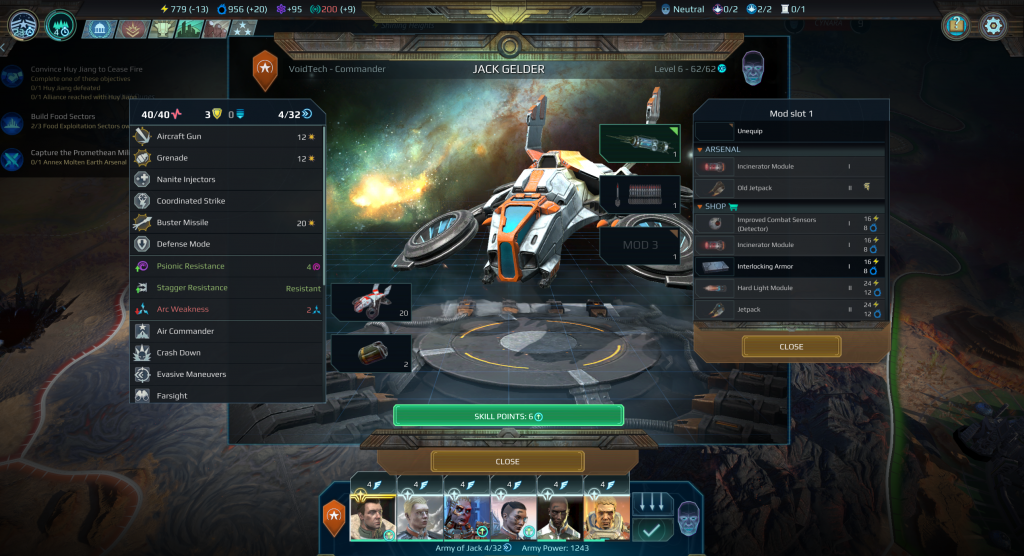
Research that unlocks various units
In the early days of gaming, developers added “variety” of enemies by simply changing their colors. Dragon Quest and Final Fantasy were especially guilty of this: you had green slimes, blue slimes, and red slimes. Or you had the Flans in Final Fantasy.
The research behaves similarly in that the the labels and research are the same, but they unlock unique faction units. Factions also have unique research trees in addition to the common ones.
I rushed research bonuses in order to get the largest units available as quickly as possible. This gave me a huge advantage over enemies. Or having a party with several heroes in it also helped instead of having each hero lead an army.
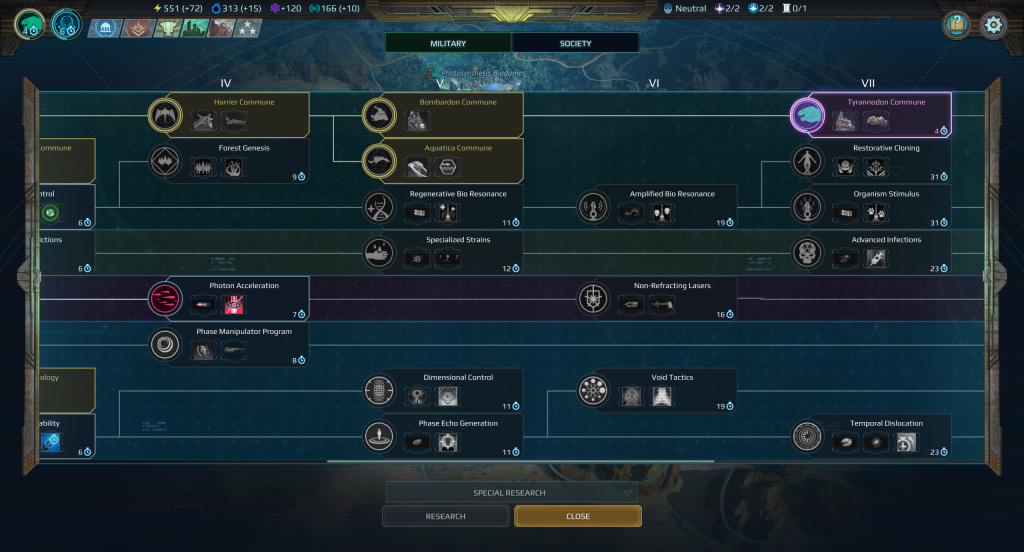
Battles
I have mixed feelings about the battle. On one hand, I found it enjoyable to use the units with the equipment that I chose. Seeing those weapons in action was fun.
On the other hand, I found myself increasingly using the Auto Combat button as the game progressed. I was more concerned about the story and quests than the actual battle. So long as I won and didn’t lose my heroes, I was happy. In most battles, I lost only regular army units, so I soldiered on using Auto Combat.
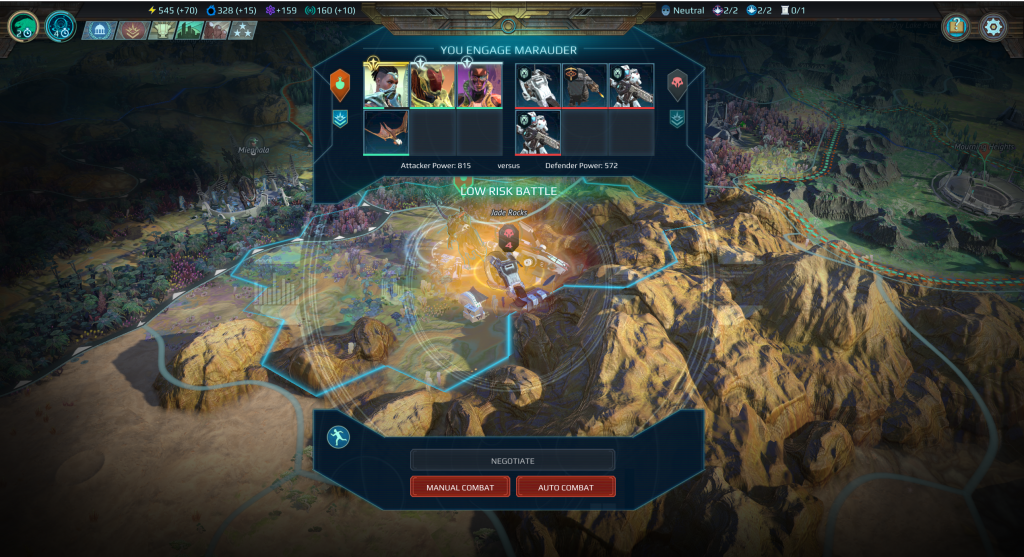
In the image above, we see an encounter with an alien hostile. Notice the difference in army values. Even when the values were close enough, I chose Auto Combat. When the army didn’t include a hero, I used Auto Combat despite the odds.
Building replacement army units was fairly quick compared to other 4X games that might take 10+ turns to get an elite unit.
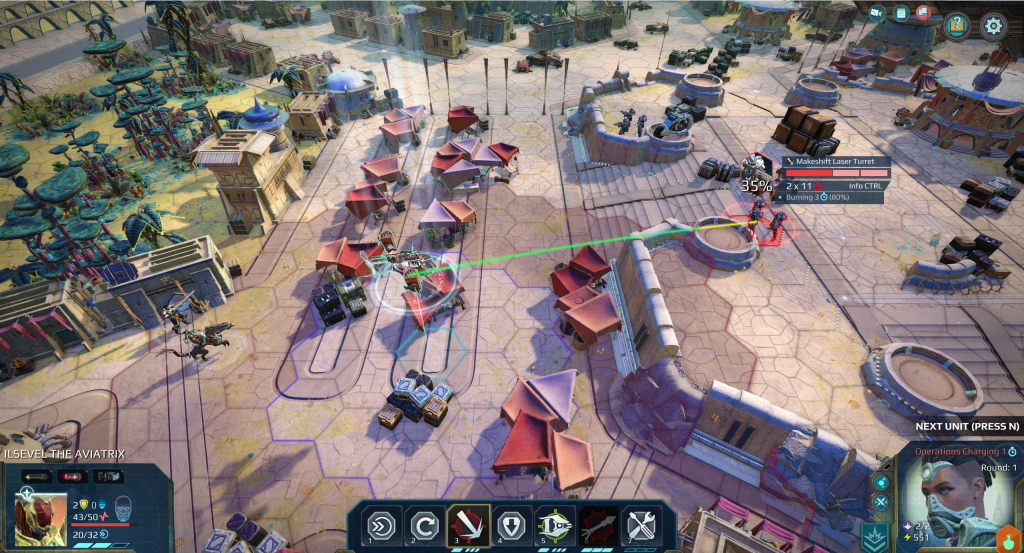
My one criticism about the battlefield is that there’s just too much going on that can be confusing. The various structures for cover are nice, the fauna, the different coloring, and the units and their abilities can really make the battlefield confusing. At some points, I was a little lost looking for enemies and targeting.
But having destructible structures was a nice touch. Shooting at exploding barrels was fun, not to mention the staggering effects it caused on the enemy units.
Exploration
I really enjoyed the exploration aspect of this game. The visuals are great, and if you’re playing the campaigns, then the quests and lore add a level of engagement that isn’t seen in many 4X games. The quests are also done in a manner help players understand the story.
The different outcomes of some of the quests and the consequences keep players engaged with the game. Player choices have different effects in the game, which I found refreshing for this type of game.
I have 2 criticisms about the game: the first is the colony management.
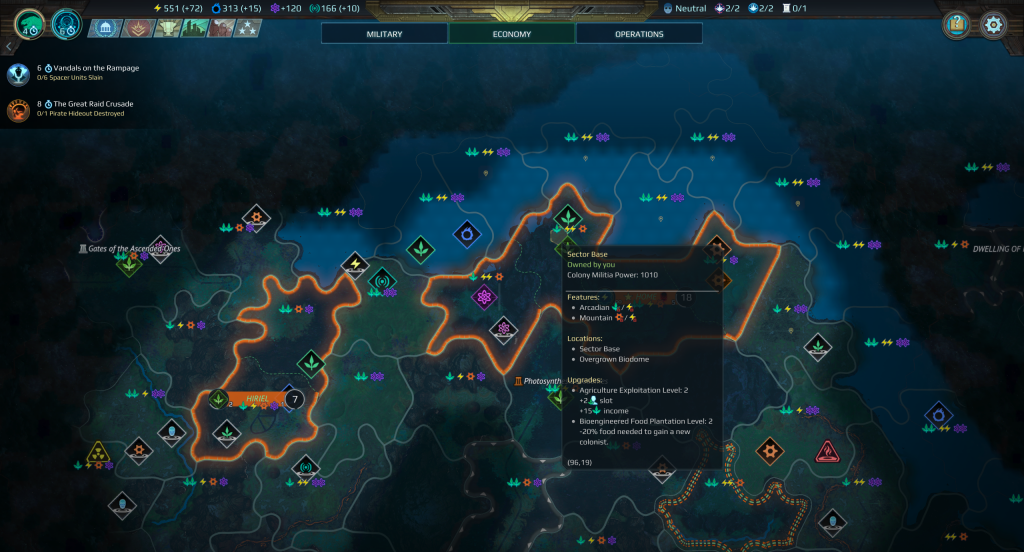
There’s something lacking about colony management that I can’t put my finger on. Cities don’t have a building limit, so you can exploit those cities into powerful producers regardless of how you develop the city.
Having an automated colony manager here would really help with larger maps. The ability to set a colony preference toward research or food would be great, though the annexations would be a little tricky to handle.
Some tiles have detrimental effects, like reduced happiness levels, but those negative effects are easily avoidable. And research helps mitigate those effects later on. Buildings seem too easy to produce, and their benefits seem too powerful considering the ease of development.

Even in the colony unit production image above, a Tier III unit takes only 4 turns to produce, making your army deadly to any other faction. That you can equip those units with even more mods means it’s fairly easy to overpower your enemies if you’re rushing research and units. Multiply that by a few big cities, and you can have a powerful army within a fairly short number of turns.
I suppose this is great for players who enjoy winning 4X games through military dominance. The game also gives you multiple opportunities to “win” or acquire units through quest or task completion.
But having multiple colonies and having to manage them individually quickly bogged down the game session.
My other criticism is the lack of automated exploration.
As I played more scenarios, I started to realize how much of a pain it was to explore the world. Perfectionists will have the same complaint: there’s no option to set a probe unit to automatically explore and reveal the map. That means you’ll have to move or confirm movement for all of your explorers.
Research will unlock options to reveal sections of the map, but it’s not as effective a tool. Instead, having an option to build an automated exploration probe (or even the option to automate exploration) would be nice. These probes can even be prohibited from grabbing caches.
Other 4X games manage this by having available research that reveals the world map. For instance, if we have satellites above already, then why is the world map still concealed? That said, fog of war should be there, or there should be a strategic ability to reveal the world map at a cost. You can request shared vision from your allies later in the game though.
I think more experienced players will have to move the difficulty setting upward to face any kind of challenge in this game. Some of the issues I’ve mentioned above like the ease of building and rushing research can be solved if you raise the difficulty setting. I personally played the game on beginner to learn the mechanics and then on normal. But advanced 4X players should consider going above normal
But if you’re a casual player who wants to become involved in the lore of the Age of Wonders Planetfall universe, then by all means play it on beginner or normal and enjoy the story.
Graphics
My first impression of the graphics was how colorful everything is. Many science fiction games have a darker palette to give the game a serious tone, but Age of Wonders Planetfall has a bright quality to it that is reminiscent of its previous fantasy games. This was a little unsettling for me, but after I became accustomed to it, I wondered why 4X science fiction games have to be dark to begin with.
My one criticism is that some scenes are too bright. Note the screenshot of a battle. There’s a lot going on in the battle scenery. The colors and the sheer multitude of objects on the screen can be confusing initially.
Plot
The plot is fairly generic in that it takes place after the dissolution of the Star Union. This background setup allows for the faction stories to come alive. Many 4X games tend to share a variation of this plot where a mighty empire disappears only to leave the remaining powers to struggle for dominance. Usually, those 4X games speak about some precursor race of aliens, but in this case, it’s the Star Union.
I haven’t played all the factions, but if their stories are anything like the Vanguard faction story, then the stories promise to be interesting. The branches and scenarios that unlock as you play the campaign give you a nice change of pace from playing the same faction and units all the time.
Conclusion
I’ve enjoyed the earlier Age of Wonders fantasy games when I was younger. The fantasy elements of the game, the lore, and the difficulty made previous iterations of Age of Wonders fun.
Age of Wonders Planetfall retains all the elements of its predecessors and improves on those elements. It’s almost what you’d expect from a modern Sid Meier’s Alpha Centauri.
This game is a definite buy if you’re a fan of science fiction and previous Age of Wonders games. Age of Wonders Planetfall will give you countless hours of fun exploring the various factions and the game’s lore.



